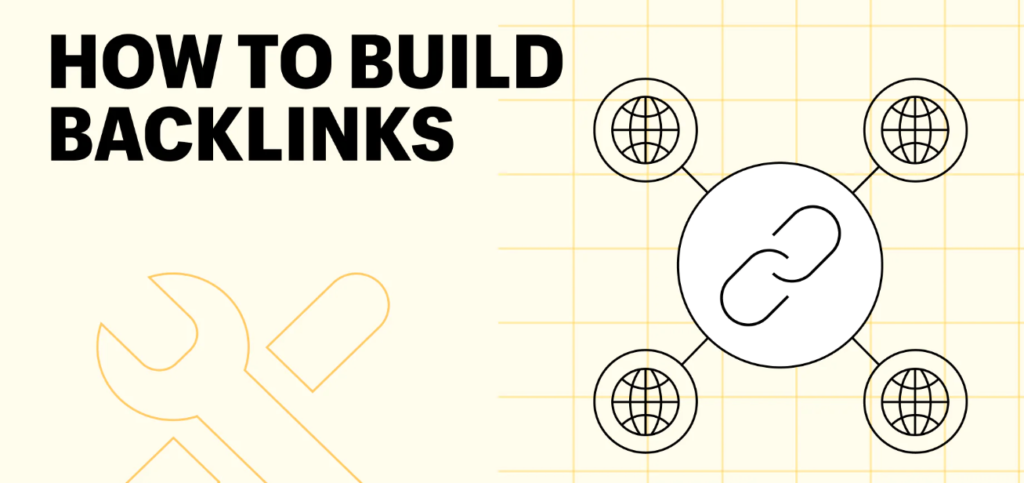In the realm of digital marketing, Search Engine Optimization (SEO) is an indispensable tool for enhancing a website’s visibility and driving organic traffic. SEO strategies are typically classified into three main categories: White Hat, Black Hat, and Gray Hat. While White Hat SEO focuses on ethical practices that adhere strictly to search engine guidelines, and Black Hat SEO involves aggressive techniques that often violate these guidelines, Gray Hat SEO occupies a nuanced middle ground. This extensive guide will delve into the intricacies of Gray Hat SEO, exploring its strategies, benefits, risks, and best practices.

What is Gray Hat SEO?
Gray Hat SEO encompasses techniques that are not explicitly forbidden by search engines but are considered manipulative and risky. These strategies are not clearly defined as ethical (White Hat) or unethical (Black Hat) but reside in a gray area. The appeal of Gray Hat SEO lies in its potential to yield quick results and provide a competitive edge without crossing the line into outright unethical behavior.
The Nuanced Middle Ground
To understand Gray Hat SEO, it’s essential to grasp its position relative to White Hat and Black Hat techniques:
- White Hat SEO: Involves ethical strategies that focus on providing value to users and complying with search engine guidelines. Examples include high-quality content creation, mobile optimization, and ethical link building.
- Black Hat SEO: Involves manipulative strategies designed to deceive search engines and achieve rapid rankings. Examples include keyword stuffing, cloaking, and link farming.
- Gray Hat SEO: Involves strategies that are not explicitly forbidden but can be perceived as manipulative. Examples include purchasing old domains, using private blog networks (PBNs), and leveraging clickbait titles.
Common Gray Hat SEO Techniques
1. Purchasing Expired Domains
Strategy: Acquiring domains that have expired but still possess high authority and backlinks.
Benefit: These domains can be repurposed to direct traffic to your main site or serve as part of a PBN.
Risk: If search engines detect the manipulation, it can lead to penalties or deindexing.
Detailed Process:
- Research: Identify expired domains with a strong backlink profile and relevant niche.
- Acquisition: Purchase these domains through platforms like GoDaddy Auctions or NameJet.
- Utilization: Redirect these domains to your primary website or use them to build a network of supportive sites.
2. Private Blog Networks (PBNs)
Strategy: Creating a network of authoritative websites that link back to your main site to boost its ranking.
Benefit: Can significantly improve your site’s authority and rankings.
Risk: Search engines actively combat PBNs, and getting caught can result in severe penalties.
Detailed Process:
- Network Building: Develop multiple high-quality blogs with unique content in the same niche.
- Linking Strategy: Strategically place backlinks to your main site within these blogs.
- Maintenance: Regularly update the blogs to maintain their authority and avoid detection.
3. Cloaking
Strategy: Presenting different content to search engines than to human visitors.
Benefit: Can improve rankings by showing search engines keyword-optimized content while providing users with more engaging content.
Risk: Highly risky as it directly violates search engine guidelines.
Detailed Process:
- Content Creation: Develop two versions of the same page—one for search engines and one for users.
- Cloaking Technology: Use IP delivery or user-agent cloaking scripts to display the appropriate content based on the visitor type.
- Monitoring: Regularly check the effectiveness and ensure search engines do not detect the cloaking.
4. Clickbait Titles
Strategy: Crafting sensational and misleading titles to attract clicks.
Benefit: Can drive significant traffic to your site.
Risk: Can lead to high bounce rates and a damaged reputation if the content does not deliver on the promise of the title.
Detailed Process:
- Title Crafting: Create compelling and intriguing headlines that entice users to click.
- Content Alignment: Ensure the content somewhat aligns with the title to reduce bounce rates.
- Analytics: Monitor user engagement metrics and adjust strategies accordingly.
5. Automated Content Creation
Strategy: Using software to generate content automatically.
Benefit: Saves time and can produce large volumes of content quickly.
Risk: Often results in low-quality content that can be penalized by search engines.
Detailed Process:
- Tool Selection: Choose reliable content generation tools like AI writers.
- Content Generation: Automate the creation of articles, blog posts, and other content forms.
- Quality Control: Manually review and edit the generated content to ensure it meets quality standards.
6. Paid Reviews and Testimonials
Strategy: Paying for positive reviews and testimonials to boost credibility.
Benefit: Can enhance brand reputation and trust.
Risk: If discovered, can lead to reputational damage and penalties.
Detailed Process:
- Vendor Selection: Identify credible sources for purchasing reviews.
- Review Crafting: Provide guidelines to ensure the reviews appear genuine.
- Publication: Publish reviews across multiple platforms to create a broad perception of credibility.
Benefits of Gray Hat SEO
- Faster Results: Compared to White Hat SEO, which often takes time to show results, Gray Hat techniques can deliver quicker improvements in rankings and traffic.
- Competitive Edge: In highly competitive industries, Gray Hat strategies can provide the necessary boost to stay ahead of competitors.
- Flexibility: Gray Hat SEO offers a range of strategies that can be adapted to different situations and goals.
Risks and Ethical Considerations
- Penalties: Search engines continuously update their algorithms to detect and penalize manipulative practices. Engaging in Gray Hat SEO increases the risk of incurring penalties.
- Reputation Damage: If users or industry peers discover that a site is using manipulative tactics, it can lead to a loss of trust and credibility.
- Algorithm Updates: Search engine algorithms are constantly evolving. Techniques that work today might be penalized tomorrow.
- Ethical Dilemmas: Many Gray Hat techniques skirt the edge of ethical behavior, posing moral questions about the fairness and integrity of using such methods.
Best Practices for Implementing Gray Hat SEO
- Research Thoroughly: Understand the potential risks and benefits of each Gray Hat technique. Stay updated with the latest SEO guidelines and algorithm changes.
- Use Moderation: Avoid over-reliance on any single Gray Hat strategy. Diversify your SEO approach to mitigate risks.
- Monitor Closely: Regularly monitor your site’s performance and rankings. Be prepared to adjust your strategies if you notice any negative impacts.
- Maintain Quality: Even when using Gray Hat techniques, prioritize high-quality content and user experience. This helps in maintaining a positive reputation and reducing bounce rates.
- Legal Compliance: Ensure that your strategies comply with legal regulations, such as those concerning consumer protection and advertising.
Case Studies and Examples
Case Study 1: The Power of Expired Domains
A small e-commerce business struggled to compete with larger rivals. By purchasing a series of expired domains with high authority, they redirected these domains to their main site. Within a few months, their organic traffic increased by 30%, and they saw a significant improvement in their search engine rankings.
Detailed Steps:
- Identification: Used tools like Ahrefs and SEMrush to find expired domains with strong backlinks.
- Purchase: Acquired the domains through domain auction sites.
- Redirection: Implemented 301 redirects to funnel authority to the main site.
- Monitoring: Continuously monitored traffic and backlink quality to ensure sustainable growth.
Case Study 2: Leveraging PBNs for Local SEO
A local service provider created a network of niche-specific blogs that linked back to their main site. By carefully curating content and maintaining the quality of the PBN, they managed to boost their site’s authority and achieve top rankings for several competitive keywords in their local area.
Detailed Steps:
- Network Creation: Set up multiple high-quality blogs in the local niche.
- Content Strategy: Regularly updated the blogs with relevant and engaging content.
- Linking: Strategically placed backlinks to the main site within the content.
- Maintenance: Kept the PBN sites updated and secure to avoid detection by search engines.
Future of Gray Hat SEO
The future of Gray Hat SEO is uncertain, given the continuous advancements in search engine algorithms. However, as long as there are opportunities to exploit ambiguities in these algorithms, Gray Hat SEO will likely persist. The key for practitioners is to stay informed about changes and be ready to adapt their strategies accordingly.
Emerging Trends
- AI and Automation: As AI technology advances, the use of automated tools for content creation and link building will become more sophisticated, potentially blurring the lines between White Hat and Gray Hat SEO.
- Voice Search Optimization: With the rise of voice search, Gray Hat tactics might evolve to exploit this new frontier, focusing on keyword manipulation specific to voice queries.
- User Experience (UX): As search engines place greater emphasis on user experience, Gray Hat strategies may increasingly target UX optimization in manipulative ways, such as misleading navigation or deceptive design.
Conclusion
Gray Hat SEO occupies a unique position in the digital marketing landscape. It offers a blend of the aggressive tactics of Black Hat SEO and the ethical considerations of White Hat SEO. While it can provide significant benefits in terms of quicker results and competitive advantages, it also carries substantial risks. Businesses considering Gray Hat SEO should weigh these factors
carefully, stay informed about the latest search engine guidelines, and be prepared to adjust their strategies as needed.
In summary, Gray Hat SEO is not for the faint of heart. It requires a keen understanding of SEO principles, a willingness to take calculated risks, and a commitment to maintaining high-quality content and user experience. When executed correctly, it can be a powerful tool in a digital marketer’s arsenal. However, the potential for penalties and ethical dilemmas means that it should be approached with caution and a clear strategy in mind.
Additional Tips and Strategies
Tip 1: Build Relationships with Influencers
Engaging with influencers in your niche can provide valuable backlinks and traffic without resorting to manipulative tactics. While some Gray Hat techniques might involve paying influencers, establishing genuine relationships can lead to more sustainable and ethical results.
Steps:
- Identification: Find influencers who align with your brand values.
- Engagement: Interact with their content and establish a rapport.
- Collaboration: Propose mutually beneficial collaborations that can provide value to both parties.
Tip 2: Optimize for Long-Tail Keywords
While not inherently a Gray Hat technique, focusing on long-tail keywords can complement your overall SEO strategy. These keywords are less competitive and can drive targeted traffic to your site.
Steps:
- Research: Use tools like Google Keyword Planner and Ubersuggest to find relevant long-tail keywords.
- Content Creation: Develop content specifically optimized for these keywords.
- Monitoring: Track the performance of these keywords and adjust your strategy as needed.
Tip 3: Diversify Your Link Building
Relying too heavily on any single link-building strategy can be risky. Diversify your approach by combining different techniques, including guest posting, broken link building, and leveraging social media.
Steps:
- Guest Posting: Write high-quality articles for reputable blogs in your niche.
- Broken Link Building: Identify broken links on relevant sites and offer your content as a replacement.
- Social Media: Share your content across various social media platforms to attract natural backlinks.
Summary
Gray Hat SEO is a complex and multifaceted approach that requires a careful balance between ethical considerations and the pursuit of quick results. By understanding the various techniques, benefits, and risks associated with Gray Hat SEO, businesses can make informed decisions about their SEO strategies. Always stay updated with the latest search engine guidelines and be prepared to adapt your approach as needed to maintain a competitive edge while minimizing risks.
